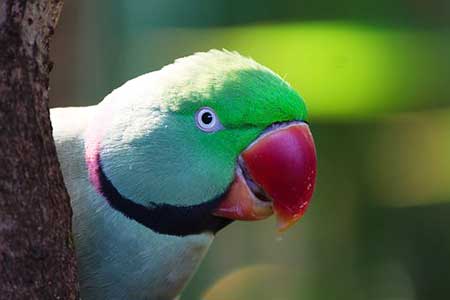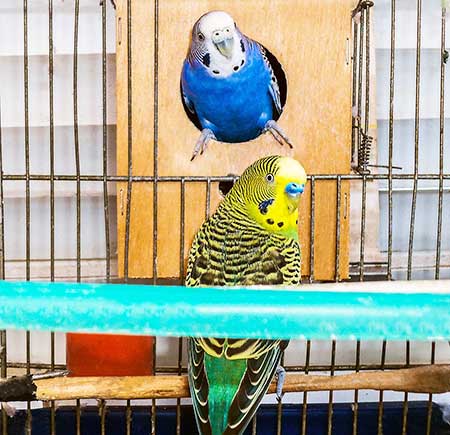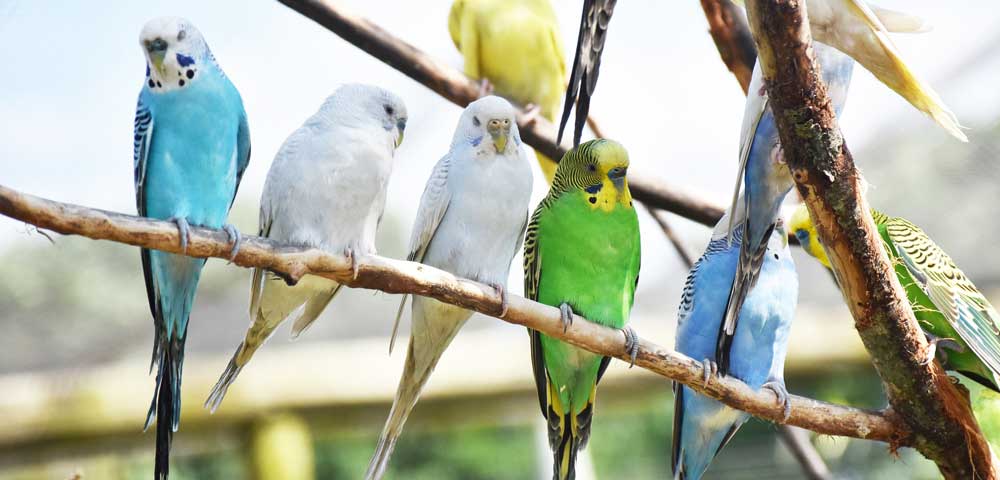Caring for Birds
Bird Care Guide
Birds make ideal pets for numerous reasons – they are small, socialable and smart, and require minimal grooming or maintenance. Like every pet though, they require your daily care and affection.
Given proper training and socialisation, birds can be every bit as loving and affectionate as a cat or dog. Some pet birds are inseparable from their owners, even accompanying them on daily errands. And birds can be easily trained to do simple tricks and tasks since they are highly intelligent.
Your pet bird will have a relatively long-life span with some parrots living to be 100 years old so they will definitely become part of your family.
Maintaining your feathered friend
In comparison to four legged pets, birds are reasonably low maintenance and do not require a large property to be your happy companion. As they constantly groom themselves ("Who's a pretty boy then?") they require minimal grooming from you with only the occasional nail trim and squirt of a luke-warm mist once a week as a form of shower (or more depending on how much they like it).

Like every pet they require daily health checks:
- Are they eating as usual?
- Are they energetic and happily bouncing around the cage?
- Are they keeping themselves pristinely preened?
What should you feed your bird?
Your bird’s diet should be made up of high-quality seed specific to the species of bird. We feed and recommend Topflite because they have a range of high-quality. suitable seeds, and they will have a food that caters specifically to your bird too. You can also feed birds a little fruit and vegetables too as little snack pieces but be sure to check what is toxic to your bird prior to feeding.
Creating a stimulating, clean environment
To have a happy bird, you must first choose the correct enclosure for your new feathered friend. Whether you are building an aviary or having an indoor cage there are a few key points you must consider.
Selecting a cage
- Your bird needs a cage that is at least large enough for them to completely extend and flap her wings.
- There should be enough room for them to move around and jump from one perch to another.
- Cage bar spacing should be appropriate to the size of your bird. If they are too narrow, feet or legs may get stuck between the bars. If the spacing is too wide, your bird may try to escape or get their head caught between the bars.
- Make sure the cage materials are safe for birds.
- Look for a powder-coated cage, and avoid galvanized wire cages, or cages with any exposed solder at the joints.
- Rremovable grate at the bottom to let droppings fall through out of reach, and an easily removable bottom tray to facilitate daily cleaning.
- Cage doors should be large enough for your bird to enter easily, but make sure they are secure and can’t be opened by curious beaks!

Furniture & Toys
- All pet birds need to have a variety of perching surfaces to keep their feet healthy and prevent problems such as calluses and “bumble foot”. At least 3 perches of varying diameters and materials. For example, try using one wooden, one rope perch, and one cement perch. Make sure the perches are appropriately sized for your bird, so their grip is secure and they won’t fall or lose their balance.
- Food and water dishes that can be easily cleaned are also important. A separate water dish or plant mister (spray bottle) can be provided for bathing.
- Enriching your bird’s environment with toys and other special objects is crucial in keeping them entertained and comfortable. The species of bird you have, as well as your birds’ individual personality and preferences, will help you determine the appropriate toys and furnishings.
- A variety of toys should be on hand at all times. Larger birds will, and should, quickly destroy and dismantle toys – this can get expensive, so budget for replacing toys regularly!
- For most birds, we recommend placing at least three different toys in the cage, with several others on hand to rotate into the cage on a regular basis.
- Note: Shy birds will be distressed by frequent change, you must know about the species and your individual bird.
- Supplying your bird with toys they can destroy will help prevent damage to your home and belongings that should stay out of a beak's reach!
- Place the cage in an area that is free of drafts, away from kitchen heat and cooking fumes, and out of heavy “traffic” areas in your home.
Environmental enrichment, of course, extends beyond the limits of your birds’ cage. Establish safe areas outside the cage where your bird can be out, interacting with you and your family in a supervised setting. Play gyms and t-perches are commonly used. Leave on the television or a radio or play a tape recording of your own voice when you go out,
If your bird will be spending a lot of time outside the cage, it is a clever idea to have her wings and toenails trimmed.
- Trimming the wings will prevent her from escaping through an open door or window and keep her safe from common hazards such as ceiling fans and sliding glass doors.
- Overgrown toenails can get caught in toys, towels or carpet.
Should you have more than one bird?
There are differing opinions on whether birds should be kept in pairs or alone. Whether you have more than one bird should be taken on a case by case basis.
Ask yourself the following questions:
- Was my bird hand reared or a potentially jealous type?
- Is my bird an aviary bird
- Is the bird I’m looking at suitable for the space I'm able to provide it?
- Is there enough space for another bird?
The best thing you can do is do some specific research into your bird’s breed. It may be a case of getting another bird but keeping in a separate enclosure as the two may not be compatible but from across the room will keep each other entertained.
TOP TIPS
- If you wish to tame or teach your bird to talk this will take time and patience. Make sure you have no mirror or other bird in the cage if you wish to teach them to talk.
- Different birds have different life expectancies - do some research to figure out which will be best suited for you.
- Check on a regular basis for signs of ill health: Feathers fluffed up? Claws too long? Beak nice and clean?
- Every two to three months apply mite spray and worm.
- Remember anything that goes into the cage will be chewed so be careful of the toxicity of what is given to them.
- Change the toys regularly (dependant on the personality of your bird) to keep them entertained.
- Always ensure your bird has cuttlefish.
- Take time every day to socialise with your bird.

9698